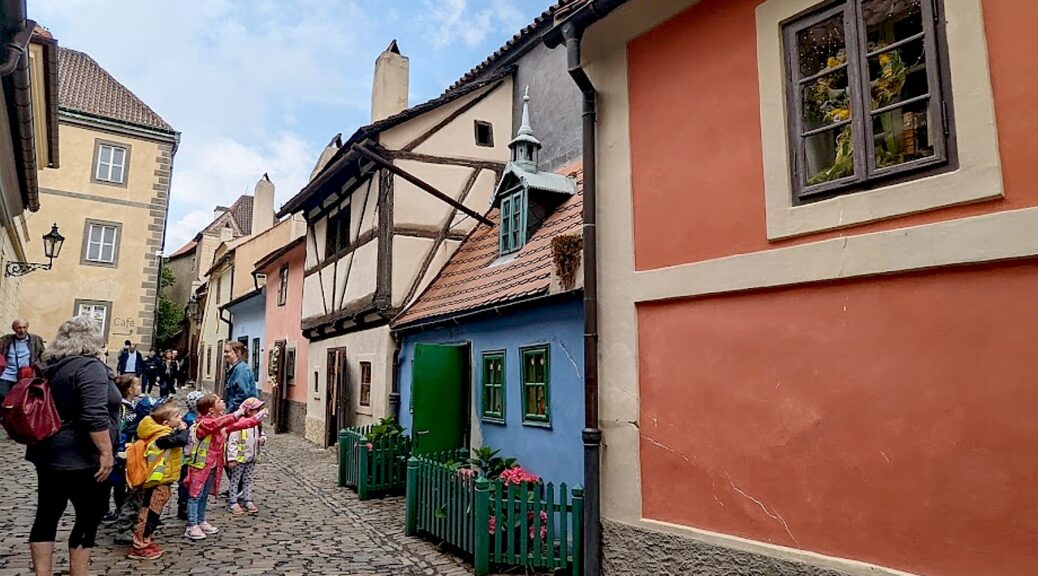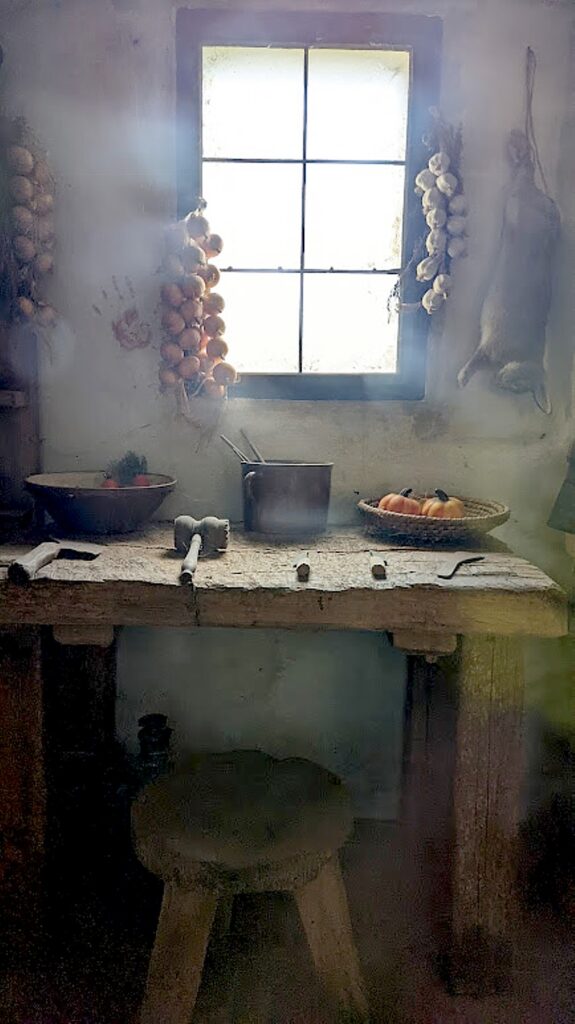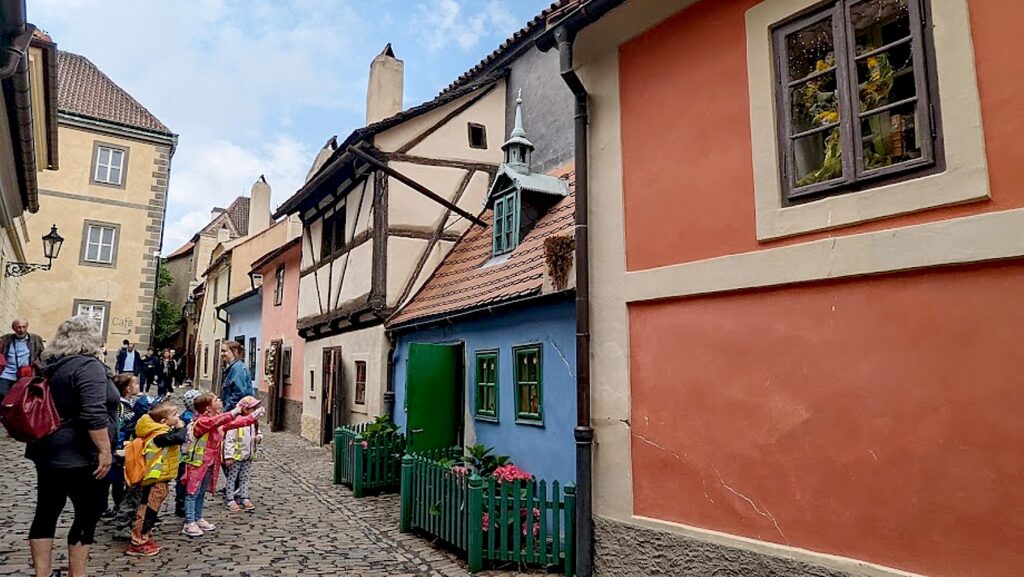
By Karen Rubin, Travel Features Syndicate, goingplacesfarandnear.com
For my second full day in Prague, I head out to what is appropriately its most important attraction, Prague Castle. I walk over the Charles Bridge (Karlov Most), which was built by Charles IV in 1357, and then up, up, and up (you can take a tram) to the castle gate. I flash my Prague Cool Pass app on my phone at the ticket window and get a ticket that you present at for entry to each of the various attractions within the castle complex, which dates back to the 9th century.
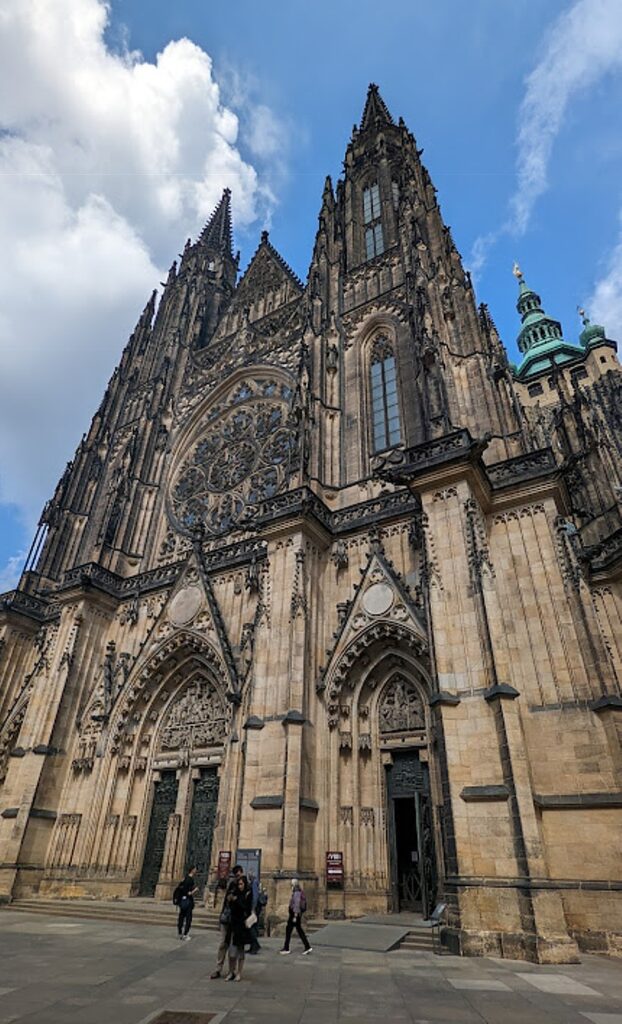
I am so happy to have the time to just wander and read the various notes that are provided (I opt out of renting the audio tour), and will return the next day with a guide from the CroisiEurope Elbe Princess who will point out the details that I have missed in the famed St. Vitus Cathedral, Royal Palace and Basilica of St George (I note the relief outside of St. George slaying the dragon, symbolic of the Church defeating paganism). (Some of the Castle sites were closed, including the Rosenberg Palace).
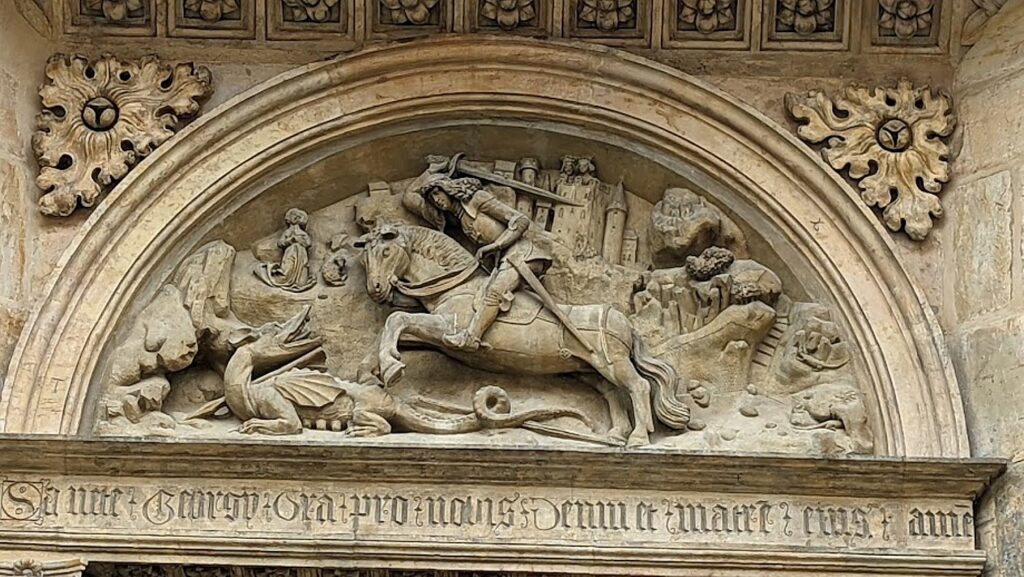
The Castle is a vast complex and today is the seat of the Czech Republic’s government (a flag is raised when the president is in).
A few tidbits: Cathedral St. Vitus was built between 1344 and not finished until 1929. Half of the Cathedral is “new”. The two original architects are buried within the Cathedral, and in the most elaborate tomb of all is Charles IV, himself, who did so much to build the “New Town” of Prague, the cathedral, and the university. The Bohemian Crown jewels are kept within a hidden room inside, and seven keys – each one held by a different official – are needed to open it. In a small chapel, I note actual skeleton remains peeking out through a window.
There are horrific stories, too. Ludmilla, with her husband sought to convert the country to Christianity, was killed assassins hired by her daughter-in-law, Drahomira of Stodor, who was jealous of Ludmila’s influence over Wenceslaus (her son and Ludmilla’s grandson). Soon after Ludmilla was canonized. Wenceslaus (widely referred to as Good King Wenceslaus) was killed by his brother around 935 and also was made a saint.
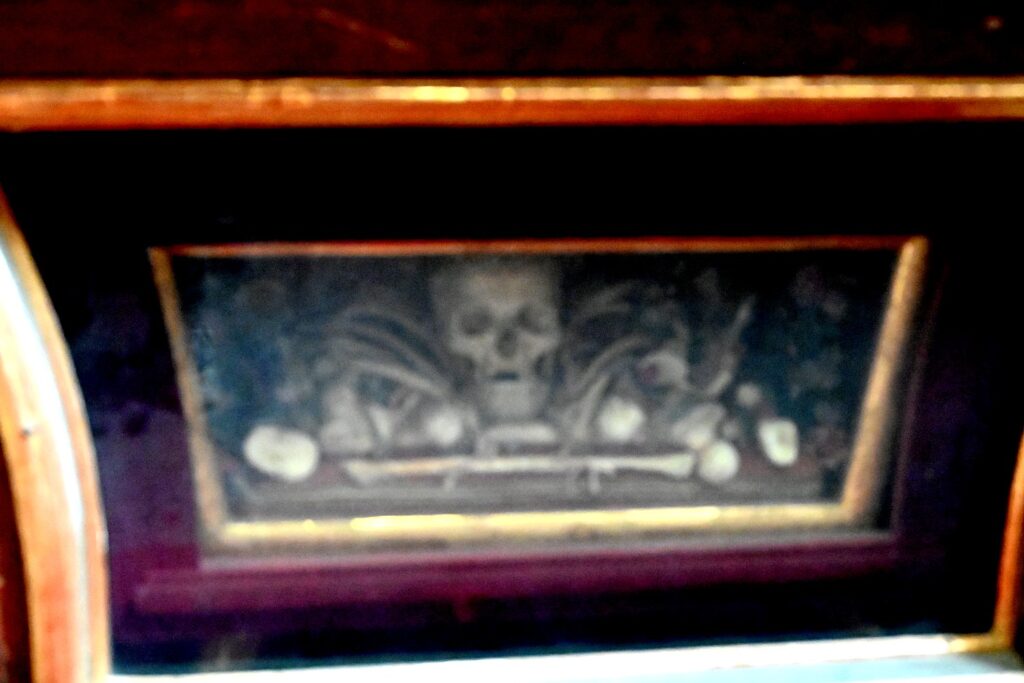
It’s interesting who becomes a saint. An extremely popular saint, prominent in the cathedral, is St. John of Nepomuk, the court priest of King Wenceslas IV. Legend has it that he was killed by request of the king, because he refused to tell the king about the queen’s confession, and his body thrown off the Charles Bridge. When you go to the Charles Bridge, you can see the statue (one of 30 that line the bridge) depicting this story, where the tradition is to touch his image in order to return to Prague, and walk a few steps to the place where his body was thrown into the water, in 1383.

In the Royal Palace, we go into a gigantic hall, that dates from 1492, where jousts (on horseback) were held. It is an architectural achievement because it was built without supports for the ceiling.
We learn that Empress Maria Theresa, who brought compulsory education to Europe and was responsible for a major rebuilding of the castle, was the mother of 16 including Joseph II who ruled from 1780-90 and freed the serfs (as well as liberalizing restrictions on the Jews); his sister was Marie Antoinette who lost her head in the French Revolution.
There is a portrait of Joseph II in a ceremonial room where there are replicas of the crown and septre that are hidden away.
The best part is going into the room that was the scene of the “Defenestration of Prague,” a key event in European history. In 1618, the Protestant rebels threw two Catholic Imperial Ministers and their secretary out of these windows. Surviving the fall (they fell on a pile of refuse in the moat), they took refuge in the adjoining Lobkowicz Palace where they were protected by Polyxena. (The scene is immortalized in a painting which you can view in the palace.) The Defenestration of Prague signaled the beginning of a Bohemian revolt against the Habsburg emperor Ferdinand II, leading to the Thirty Years’ War.
But I am grateful for having the time to really linger on the Golden Lane, my favorite part of the castle – there is simply so much to see.
This, I grin to myself, is where the “tiny house” trend was born.
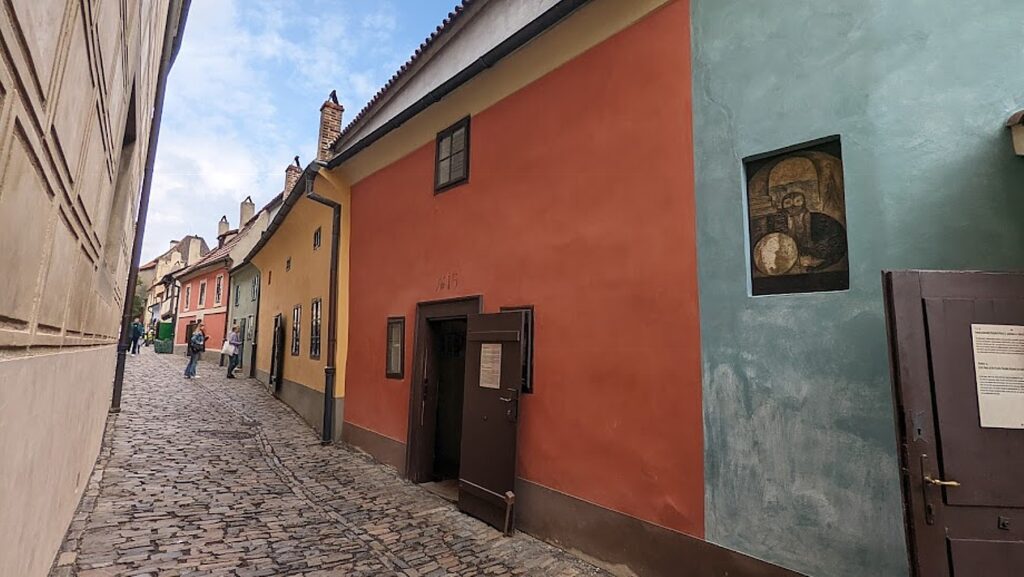
Golden Lane has a marvelous history. It’s an irregular strip of land, varying in width from 4-8 meters between the older (12th C) Romanesque walls and the later (15th C) walls that form the outer north fortification of Prague Castle on the edge of a natural ravine, the Stag Moat. Three defensive towers are attached to the castle wall (up to 320 cm thick): Powder Tower on the west, Dalibor Tower on the east and between them, White Tower. And between Dalibor and White towers, 12 vaults, each 720 cm deep and 600-660cm wide, were used as makeshift dwellings.
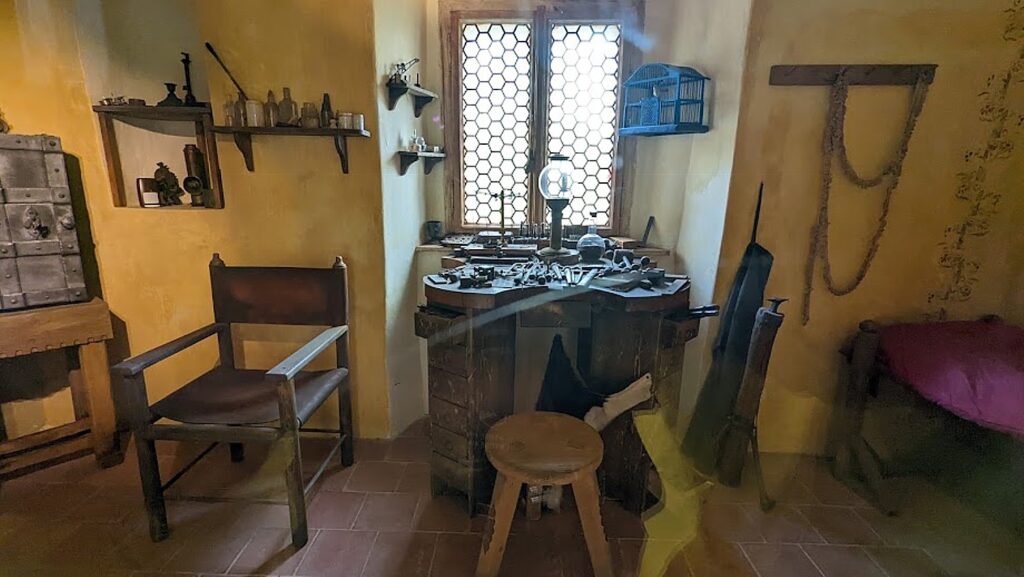
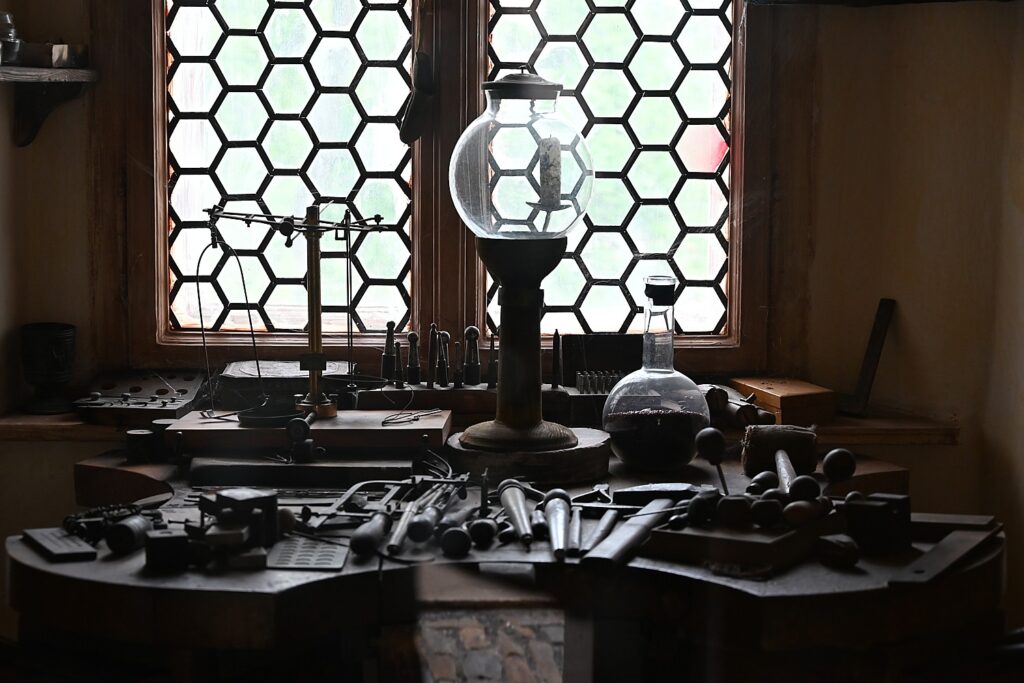
The oldest written reports are from 1560s when the lane was called Goldsmith’s Lane – its residents were probably “lesser” goldsmiths who had fled the strictly enforced guild laws in Prague’s three towns of Old Town, New Town and Lesser Town. We get to see one of these tiny houses, Number 15, as it would have been when the Goldsmith occupied it (there is a bird cage to alert the goldsmith when there were toxic fumes).
In 1597, artillerymen at the gates asked Emperor Rudolf II for permission to build little rooms within the newly repaired walls. The Red Artillerymen (named for their uniform) had to build their dwellings at their own expense, and bought and sold them. We get to see one of the houses, Number 13, that would have been inhabited by a Red Artilleryman.
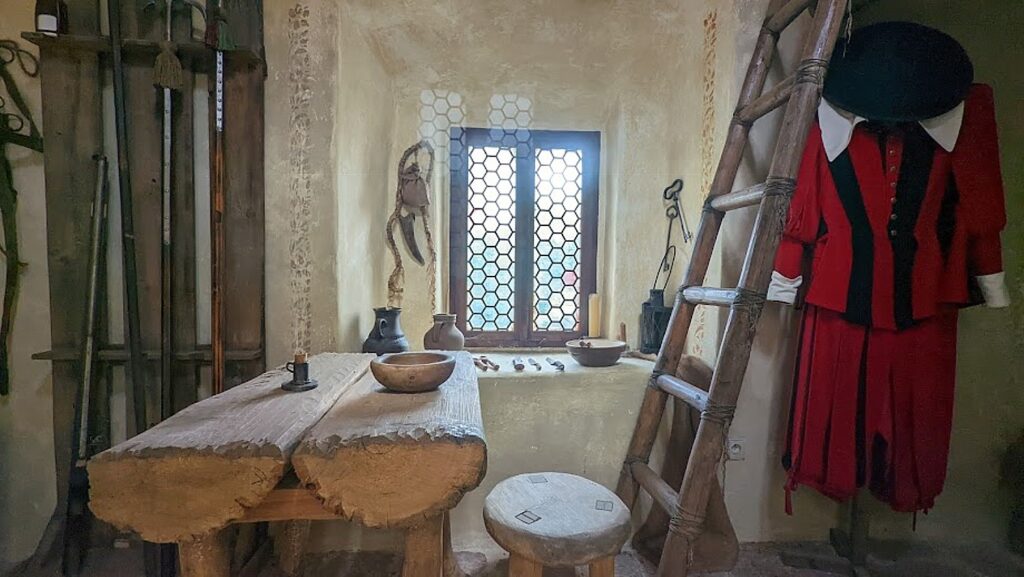
The Red Artillerymen served without fixed salary but were exempt from paying tax and lived in the castle for nothing. There were 24 Red Artillerymen guarding the gates and were subordinate to the Castle Governor. In 1597, they asked Emperor Rudolf II for permission to block the niches in the newly reconstructed castle walls and establish rooms. Their most important source of revenue came from services they performed for the nobles who were imprisoned in the White Tower and Dalibor Tower – they acted as servants, cooks, stokers, and mail carriers in addition to being prison guards. The Red Artillerymen unit was disbanded by Emperor Joseph II in 1784.
Not long after, little houses began to expand into the lane with the addition and fireplaces; new additions made. Hardly idyllic, conditions for basic hygiene remained backward. In the 18th century, there was only one privy for all the houses, a second one was only installed in the 19th century. Water pipes were laid in 1877, but it wasn’t until 1942 that the house at Number 24 had running water.
In 1953, the office of Czech president (which is within the Castle complex) expropriated the little houses from their owners. The lane was restored in 1955 by architect Pavel Janik, and the façade colors chosen by painter and animator Jiri Trnka. The last reconstruction of Golden Lane took place in 2010-11, with a new drainage system and repaving, the tiny houses were underpinned and repaired, the facades repainted, and the Defense Passage and White Tower restored.
Right up to the departure of the last tenant, in 1952, the Golden Lane community was very colorful. At first, it consisted of Castle employees – gatekeepers, guards, bellringers –and later, people who rented, many who appreciated this place as a source of inspiration.
When you see groups of tiny children coming through, you realize what a fantasy place this is – they stop in front of one that seems out of a fairytale.
Several names in the land records that have been preserved are notable:
No 22 was the home of Franz Kafka in 1916 and 1917, who rented it from his sister. It was here that he wrote “The Country Doctor.” (The house is now a bookshop with Kafka’s books prominently featured; several other tiny houses have been turned into marvelous shops.)
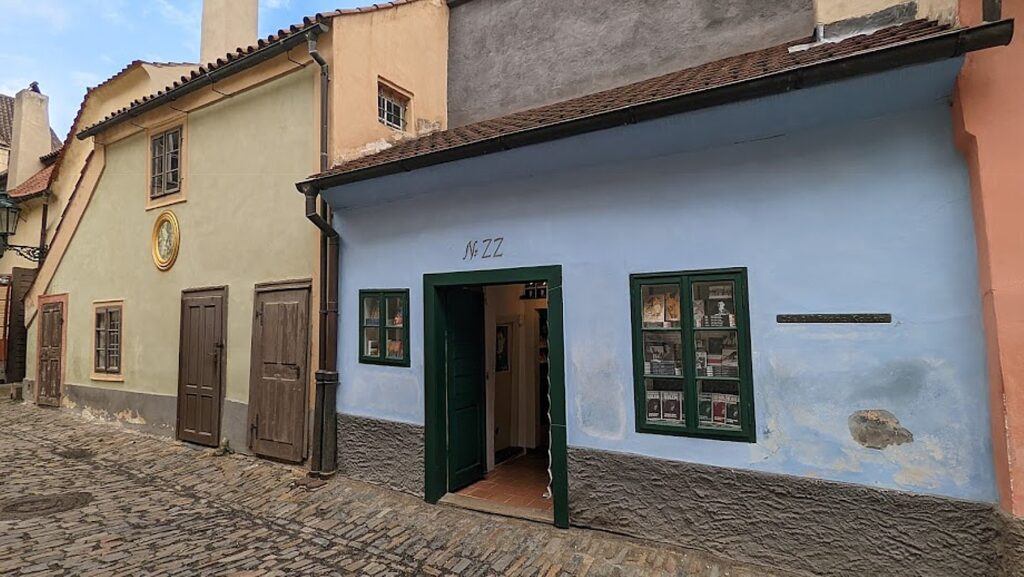
House No 12 was in the late 1930s the temporary home of the dramatist and writer of prose fiction Jiri Maranek. “In the romantic atmosphere of the lane and in everyday contact with the past, he found inspiration for his writing, particularly for his historical novels and short stories”
No 14 still has an old sign with playing cards, an owl and a crystal ball. For years this was the home of the renowned Prague tarot-card reader and clairvoyant Madame de Thebes. Before the Second World War, Matylda Prusova (her real name), the widow of a phamarcist, drew attention from afar with her black clothing and old-fashioned hat adorned with ostrich feathers. Since 1914, she had waited in vain for the return of her son who was killed in the first World War. Clients came daily to her cozy room, stuffed with bizarre objects, to have her look into their future. Because of her frequent predictions about an early end to the war and the fall of the Third Reich, she was arrested by the Gestapo and tortured to death.
No 24 was the House of Mrs. Magdalena. By the early 20th c, Golden Lane was already famous and she charged the growing number of tourists and history lovers to see her tiny house. Other enterprising owners rented to artists, writers looking for inspiration.
Number 27 was the Herbalist’s house. This essential skill of treating wounds, curing diseases, and easing suffering was always managed by one of the servants of the Castle, the notes say. Folk healers and herbalists often had enough experience to carry a certificate stating that someone was successfully cured by them. Herbalists used herbs and botanical extracts but also magic and incantation. The herbalist’s household resembled an apothecary – bottles, jugs, boxes containing nectars from plants, purgative and tonic opiates, powders for curing teeth, throat and roundworm, plasters, seeds and sugar coated flowers. A trunk or cupboard would contain snail shells, human craniums, pig’s teeth, bones from the sea spider (octopus) and dried frogs. Ceramic jars had lards from dog, human, tom cat, stork, rabbit, bear and snake.
It’s especially fun to wander through the house of a film critic – seeing the old movie posters, the clutter of cans of film, the movie projectors, as if he recently left.
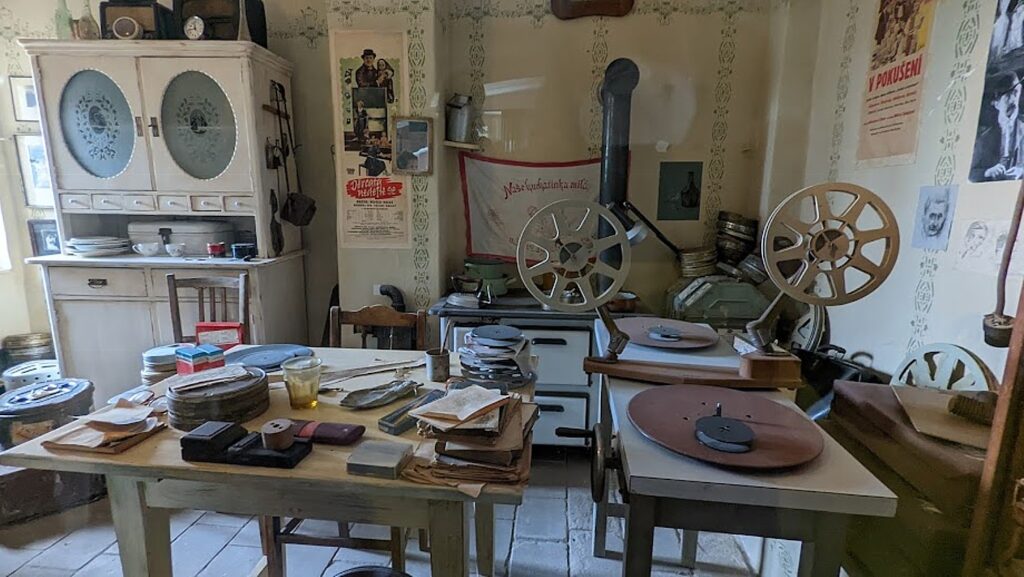
I climb a narrow, spiral staircase to an upper floor where there is an astonishing exhibit of arms and armor (really intimidating helmets). And in the Dalibor Tower, a prison from 1496 to 1781, there is a horrifying display of implements of torture. You realize that those movies depicting Dark Ages brutality were not fiction or fantasy. You can see the rack, a skeleton hung in a cage, the “Spanish boot.”
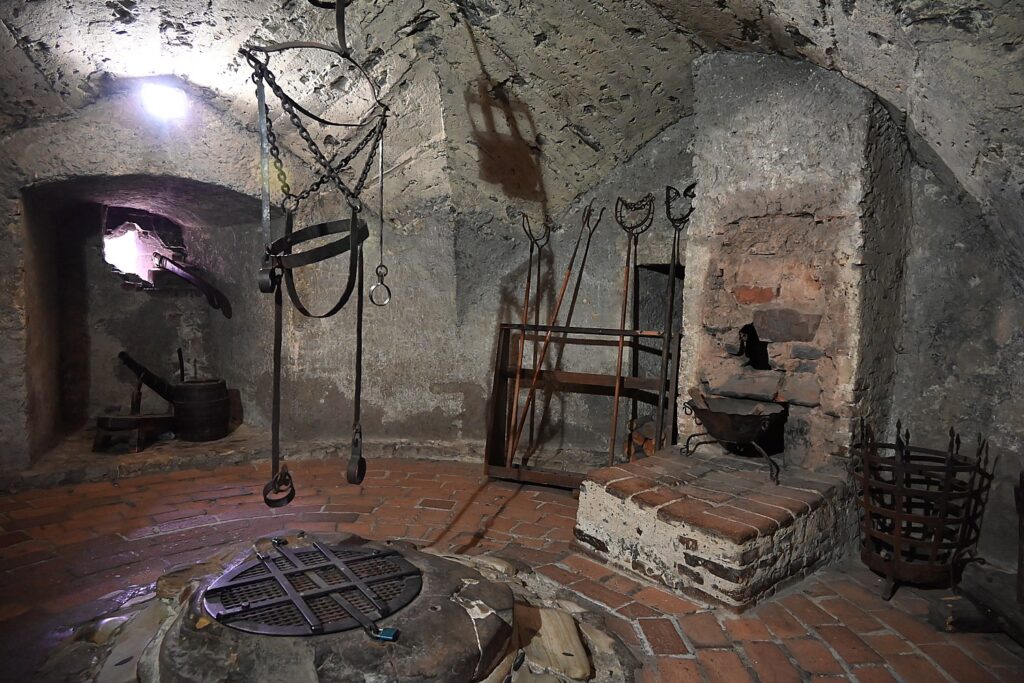
We are told that the most famous of the prisoners was the knight Dalibor Kozojed, imprisoned because he backed rebels and confiscated property. After two years of bread and water, he was sentenced to forfeit “his chattels, his honour and his head” and was executed in the courtyard in 1498. Much later, the romantic legend of Dalibor and his fiddle emerged: Supposedly, out of boredom, he played the violin so masterfully in prison that people came from far and wide to listen, enraptured. But it turns out that “fiddle” was a nickname for an instrument of torture: a rack (which we see) on which the convicted man was stretched until he began “to fiddle” – change his tune and confess.
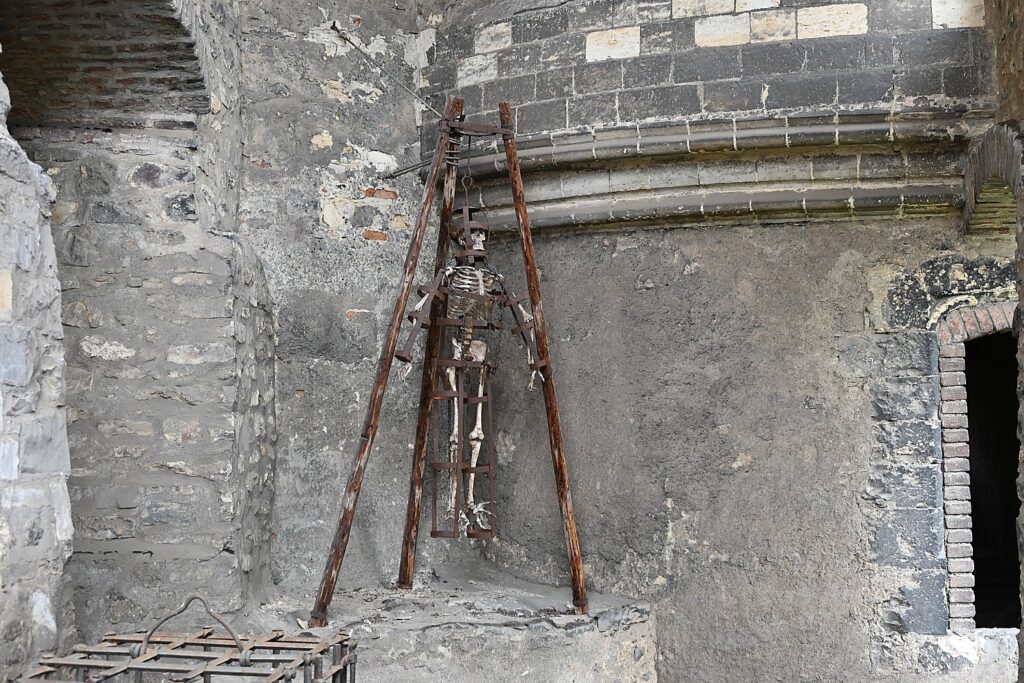
I find the place extremely disturbing (a skeleton is in a cage dangling from the ceiling as you walk down the stone stairs), but a group of school kids seem enthralled.
When I come out from Golden Lane, I look across to see the Lobkowicz Palace and realize it is included on the Prague Cool Pass (praguecoolpass.com). This turns out to be the absolute highlight for me in Prague. The Palace, itself, is fabulous, owned by a noble family that was once one of the richest in the land. The collection inside is breathtaking. And the family’s story is utterly fascinating.
__________________________
© 2022 Travel Features Syndicate, a division of Workstyles, Inc. All rights reserved. Visit goingplacesfarandnear.com, www.huffingtonpost.com/author/karen-rubin, and travelwritersmagazine.com/TravelFeaturesSyndicate/. Blogging at goingplacesnearandfar.wordpress.com and moralcompasstravel.info. Visit instagram.com/going_places_far_and_near and instagram.com/bigbackpacktraveler/ Send comments or questions to FamTravLtr@aol.com. Tweet @TravelFeatures. ‘Like’ us at facebook.com/NewsPhotoFeatures
